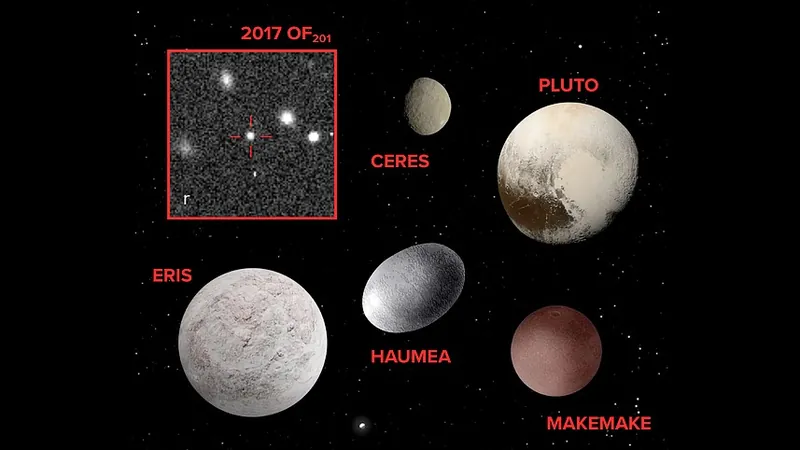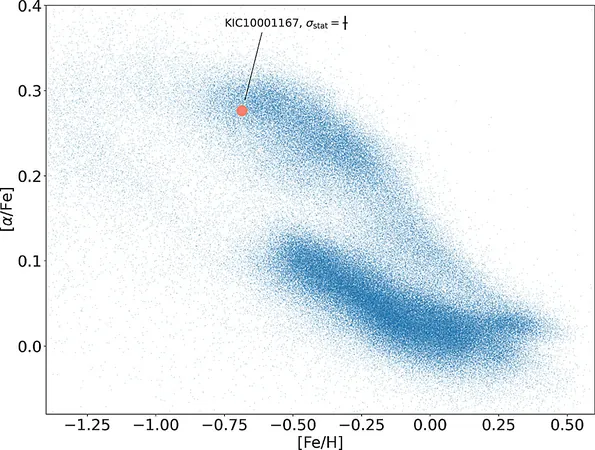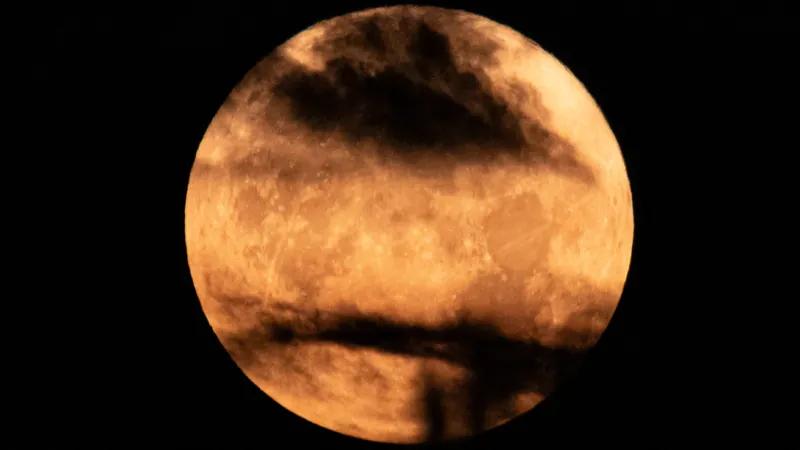
Meet 2017 OF201: The Mysterious New Dwarf Planet Discovered Beyond Neptune!
2025-05-23
Author: Jacques
A New Discovery at the Edge of Our Solar System
Astrophysicists have unveiled an astonishing discovery: a new dwarf planet lurking far beyond Neptune, named 2017 OF201. This celestial body, which has been hiding in the shadows of our solar system, boasts an orbit so extreme and elongated that it takes an incredible 25,000 years to complete a single revolution around the Sun.
What Do We Know About 2017 OF201?
Measuring about 435 miles (700 kilometers) in diameter, 2017 OF201 was identified through meticulous examination of archival data from the Blanco telescope in Chile and the Canada-France-Hawaii telescope. This remarkable planet was tracked over a seven-year span using 19 separate images!
A Journey Through Space
At its closest approach, 2017 OF201 reaches nearly 45 astronomical units (AU) from the Sun — similar to Pluto’s orbit. However, it has wandered much farther since its last close encounter with the Sun in 1930. Now, it is barreling toward an astounding distance of 1,600 AU before it starts its long trek back.
Gravitational Mysteries
The peculiar, elongated orbit of 2017 OF201 suggests intricate gravitational dynamics at play. Astrophysicist Sihao Cheng mentions potential gravitational interactions with Neptune and the Milky Way, implying that this dwarf planet may have experienced a complex migration history potentially involving the Oort Cloud, where numerous comets reside.
The Search for More Dwarfs?
This discovery raises exciting possibilities — could there be more dwarf planets like 2017 OF201 yet to be discovered? Cheng notes that this enigmatic object is detectable only 1% of the time because of its vast distance. This implies that there could be around a hundred similar celestial bodies lurking in the depths of space, waiting for their moment in the spotlight.
The Enigma of Planet 9
The existence of 2017 OF201 also fuels the debate around the elusive Planet 9, a hypothetical planet speculated to influence the orbits of distant solar system objects. Interestingly, 2017 OF201 doesn’t conform to this theorized orbital clustering, suggesting that if Planet 9 exists, its gravitational pull may not hold onto 2017 OF201 for long. Further observations are crucial to unravel the truths behind these cosmic interactions.
Continued Exploration Awaits!
Despite the impressive advancements in telescope technology, the mysteries of our solar system continue to unfold. As we peer deeper into the cosmos, who knows what other astonishing discoveries await us?









 Brasil (PT)
Brasil (PT)
 Canada (EN)
Canada (EN)
 Chile (ES)
Chile (ES)
 Česko (CS)
Česko (CS)
 대한민국 (KO)
대한민국 (KO)
 España (ES)
España (ES)
 France (FR)
France (FR)
 Hong Kong (EN)
Hong Kong (EN)
 Italia (IT)
Italia (IT)
 日本 (JA)
日本 (JA)
 Magyarország (HU)
Magyarország (HU)
 Norge (NO)
Norge (NO)
 Polska (PL)
Polska (PL)
 Schweiz (DE)
Schweiz (DE)
 Singapore (EN)
Singapore (EN)
 Sverige (SV)
Sverige (SV)
 Suomi (FI)
Suomi (FI)
 Türkiye (TR)
Türkiye (TR)
 الإمارات العربية المتحدة (AR)
الإمارات العربية المتحدة (AR)